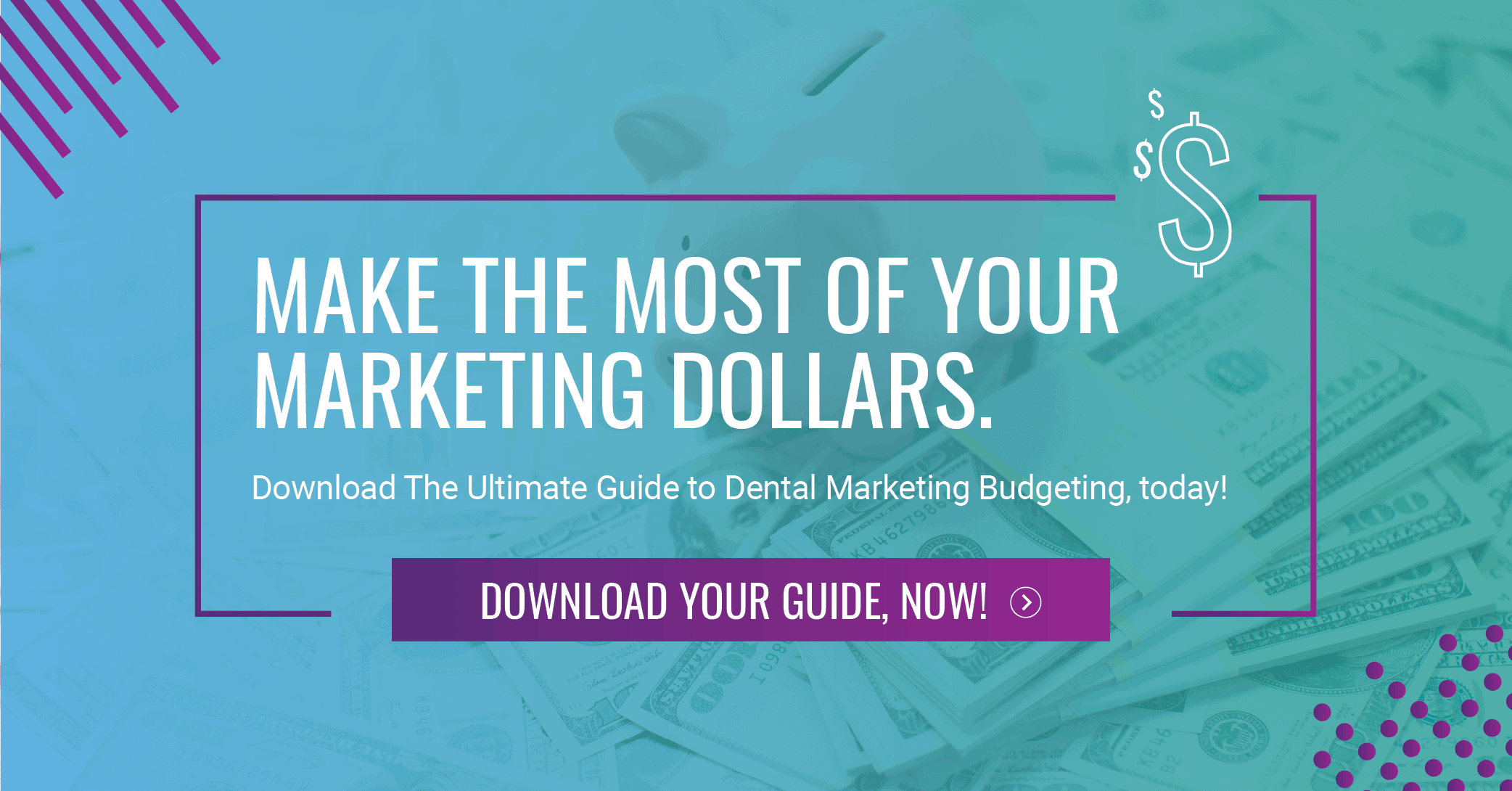Find the Right Fit for Your Dental Marketing Budget

It only takes one trip to a public beach to realize that “one size fits all” is a fallacy. The same goes for dental marketing budgets.
Having a budget that is too big or too small can leave your practice with the wrong amount of exposure. And that can get ugly.
If you’re using dental industry benchmarks as a reference point for your marketing budget, there are five variables you should consider when deciding whether you should increase or decrease your spending accordingly.
Your Type of Practice
Most dental marketing budget estimates you see will be based on general practices or the overall industry average.
If you’re a pediatric, orthodontic, or periodontal specialist, your budget may be a little higher since you’ll be targeting a more specific audience. On the other hand, if you’re an oral surgeon or endodontist, you will likely be more focused on building professional referral relationships, and that can reduce your out of pocket marketing spend. Keep in mind that, as a tradeoff, you may need to spend more personal time and effort to expand your referral network through personal interactions.
| Type of Practice | Increase/Decrease Budget |
|---|---|
| Pediatric | + |
| Orthodontic | + |
| Cosmetic | + |
| Periodontal | – |
| Oral Surgeon | – |
| Endodontist | – |
Your Pricing Strategy
Your pricing structure will also impact how much you spend for your marketing. Fee-for-service practices will tend to need a larger budget for dental marketing than offices that participate with insurance since it is a smaller percentage of patients who are without dental coverage and will be willing to pay out of pocket for treatment. Practices that offer an in-house dental membership plan should also expect to spend more on marketing their plan and attracting enough new patient sign-ups to make it highly profitable.
| Pricing Strategy | Increase/Decrease Budget |
|---|---|
| Fee for Service | + |
| Membership Plan | + |
Your Location
Being situated in an urban locale can automatically bump up your necessary marketing spend because of higher media costs and elevated agency fees. If you’re in a rural community, your costs will tend to dip below average.
In addition to the area you’re in, the exact location of your office will also affect your marketing expense. If you found a prime location for your practice in a high traffic area, you may not need to spend much to attract new patients.
| Market | Increase/Decrease Budget |
|---|---|
| Urban Market | + |
| Small/Rural Market | – |
| Good Location | – |
Your Competition
If you’re in an area saturated with dentists, or even if you’re only up against a few dentists who are marketing aggressively or are well-established, you’ll need to push your messaging a little harder to stand out from the crowd. Creativity can help differentiate your practice and reduce your media spend, but you’ll also need a good marketing agency for that.
| Market | Increase/Decrease Budget |
|---|---|
| Saturated Market | + |
| Dominant Competition | + |
What Growth Stage Your Practice Is In
If “steady growth” is considered the most common stage, then startups and offices looking to grow aggressively need to up their dental marketing game to either catch up to or outpace the competition. More mature practices that simply want to maintain a level of production or even start scaling back can probably trim their budget a bit, provided they have a healthy patient retention rate and a good amount of new patient referrals.
| Growth Stage | Increase/Decrease Budget |
|---|---|
| Startup | + |
| Aggressive Growth | + |
| Maintenance | – |
| Pre-Retirement | – |
What Size Dental Marketing Budget Fits You Best?
While this article can give you some guidance as to how much you should spend on marketing your dental practice, there are obviously a number of factors that come into play and need to be considered collectively. But hopefully I’ve steered you away from the one size fits all strategy, at least for dental marketing budgets.
If that’s still your approach for beachwear, well, I wish you the best.

